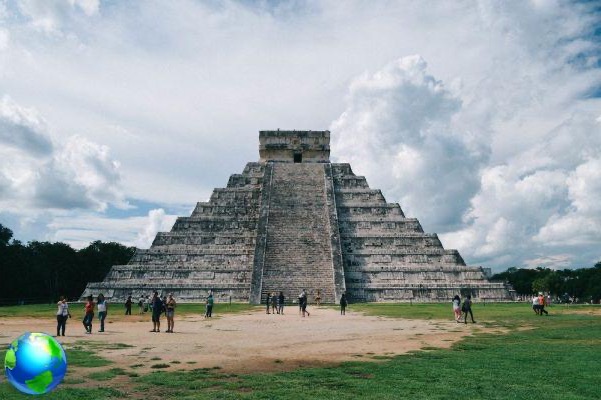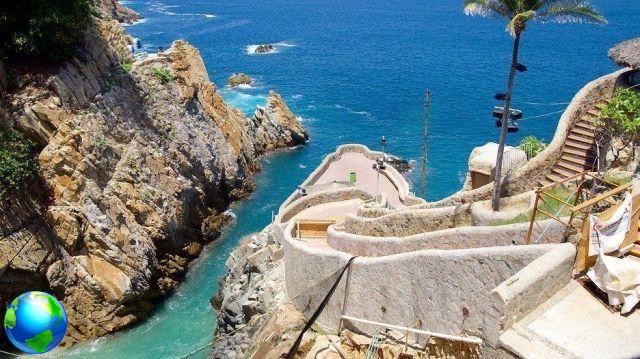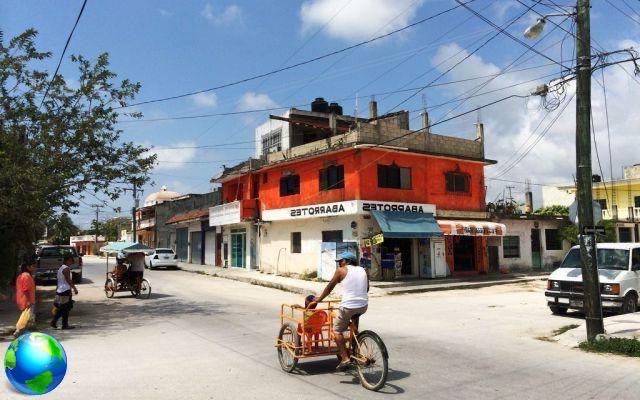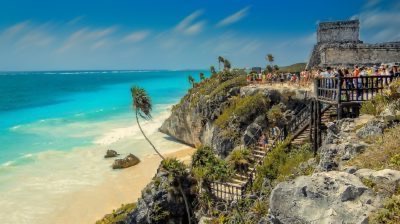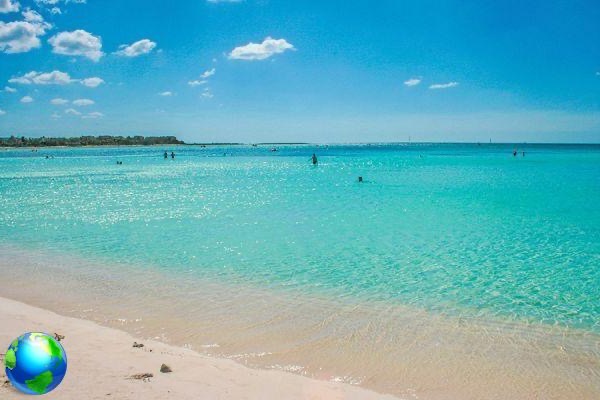Caribbean beaches meet the charm of a millenary civilization. Do I need to add more? On my last trip to Mexico I saw so many places from a postcard, but Tulum is perhaps at the top of the chart. It is a small Mexican town of less than 30.000 inhabitants in the state of Quintana Roo and has become for several years one of the most popular destinations of the Riviera Maya, the stretch of coast of the Yucatán peninsula overlooking the Caribbean Sea. It is famous all over the world for its extraordinary archaeological site, its crystal clear waters and its nightlife, but the surrounding areas also have a lot to offer. After the article on Yucatan and the one on Chiapas, in this one I have collected everything you need to know in more detail about Tulum, if you too do not want to miss this corner of paradise. So without wasting time… arriba arriba, andale andale! Vamonos to discover the beautiful Tulum.
** IMPORTANT NOTE ** Considering that the situation of international mobility is constantly changing due to Covid-19, as well as the regulations implemented by the various countries, before organizing a trip to Mexico, check the Unit's website regularly. of Crisis of the Farnesina Viaggiare Sicuri and the International Air Travel Association (IATA) website
Best time to go to: the weather in Tulum
The Yucatán Peninsula is located in the southeast of Mexico and divides the Gulf of Mexico from the Caribbean Sea. The climate is therefore mainly tropical with a season of heavy rains, heat and humidity from May to November, and a dry season characterized by a temperate climate and low rainfall from December to April. I recommend that you go between late November and December. You may run the risk of catching some aftermath of tropical showers, but they will be short-lived and you will avoid the crowds of the following months. The months between January and March are in fact considered the peak of the high season. The climatic conditions are textbook, but the prices skyrocket and tourists fleeing the greyness of winter invade Tulum and the entire peninsula (especially the Americans .. who personally don't like much, especially when they are en masse).
Health Insurance is required
In Mexico our health coverage is not valid. My advice is to always take out medical-luggage insurance that can cover you during the trip (also for any problems related to Covid / quarantine, etc.). I am very happy with many insurance companies, a site that compares the policies of different companies and proposes the most convenient policy for that particular trip. To do this you will have to enter the data relating to your trip (country, duration, etc.) and they will send you an email with the best proposal that you can then buy directly online (!!!).
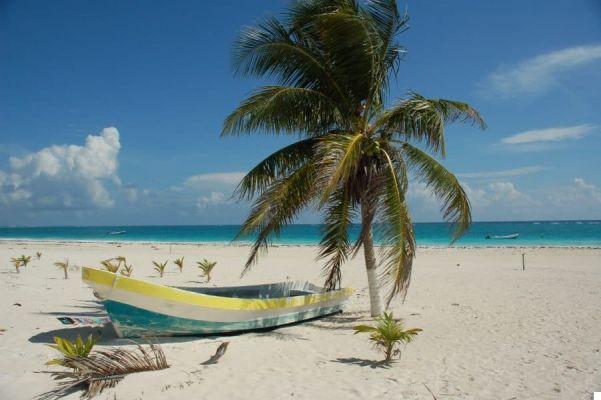
What to see in Tulum
Archaeological area: the only Mayan city located on the coast
Tulum was built by the Maya around 1200 AD and until the Spanish invasion of the sixteenth century it represented a nerve center of the empire's economy. It was indeed the only Mayan city located on the coast and served as an important maritime and land junction for trade. The very origin of the city's name relates to the Mayan word for wall. Tulum is in fact one of the few Mayan cities to have a fortification consisting of surrounding walls. This rich past has left us a very important (and beautiful!) Archaeological site. I couldn't miss it at the top of my list of places to visit in Tulum. It is located on a cliff overlooking the turquoise waters of the Caribbean and the ruins are very well preserved. The beating heart of the entire archaeological site is certainly "The Castle”, The castle (the one you can see in all the photos of Tulum), but also the Temple of the Frescoes is worth a visit. The Mayan ruins are connected to the underlying Paradise Beach from a staircase, so if after a full cultural immersion you need to refresh your ideas ... in two steps you are already soaked (in the company of a lot of people, but it doesn't matter)! Finally, if like me you want to appreciate the view without having to make your way through the many visitors, I advise you to go early enough in the morning to avoid the overcrowding of peak hours (I assure you that in the following hours the site is literally invaded by people and you will have to queue to enter).
Punta Soliman: pure relaxation
15 km from the city of Tulum, Punta Soliman it is a basin with crystalline sea and white sand where you can relax and enjoy the spectacle of the Caribbean sea without having to fight with hordes of tourists looking for a sunbed on the coast. It is a public beach surrounded by thick vegetation and protected by the coral reef. If you are looking for tranquility and want to enjoy an afternoon sunbathing or snorkeling, this beach is for you!
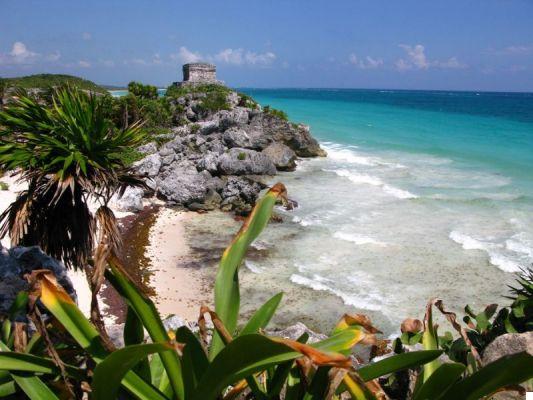
Tankha: a dream private cove
If going to the boarding on a public beach armed with towels and 50 protection cream is not for you, Tankha is the less adventurous alternative. For 150 pesos (around € 7) you have access to the beach and private cove equipped with bar, restaurant, sun beds, umbrellas and even hammocks in the palm grove. The water is very clean and in some places it is so emerald green that it looks fake. In some parts of the Riviera Maya the algae have invaded the coast, but thanks to its protected position this beach maintains its crystal clear waters. They even have a small private cenote that can be reached with a short walk in the dense vegetation! In short, a small paradise XNUMX minutes by car from Tulum.
Akumal: the turtle beach
If you lovers of sea turtles, Akumal will make all your dreams come true. Consider that in the Mayan language Akumal literally translates as "turtle place". It is a small coastal community that was founded in the XNUMXs by Pablo Bush Romero as a meeting point for scuba diving enthusiasts. It's about a half hour drive from Tulum and stays true to its name. In fact, many sea turtles swim in its waters and it is the perfect location to swim side by side with these splendid animals. When I was there for the first time years ago the beach was free, now you have to pay both to access it and to swim in the area where the turtles are found. But I give you some advice, pay only the entrance to the beach and then go to the bottom of the beach and enter the water from there; you can see turtles without paying and with almost no one around.
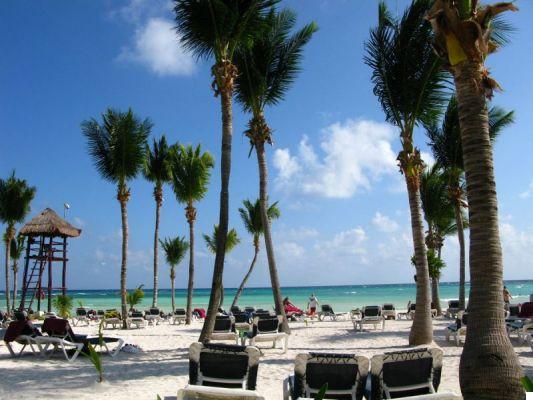
Sian Ka'an Reserve: a protected area for biodiversity
For nature lovers, the Sian Ka'an reserve is another unmissable stop. It is the largest protected area in all of Caribbean Mexico and covers a territory of 1.3 million acres (almost 10% of the entire state of Quintana Roo!). It was declared UNESCO World Heritage Site in 1987 for its importance in the ecosystem and for the biodiversity of the species of flora and fauna present. Being a protected area, it should be visited through guided excursions of varying duration. All tours minimize the environmental impact and are organized in very small groups. I recommend the tour that takes up the whole day and allows you to make a real full immersion in the nature of the Yucatán. Among alligators, exotic birds, dolphins and turtles you will no longer know which way to look: it is worth all the money of the reservation! The trip usually includes a fish lunch and a couple of stops for swimming and relaxation. I loved it !!
Xel-Ha: the natural and eco-sustainable water park
Xel-Ha in the Mayan language it means "where the water is born" and there is no more perfect way to describe it. Xel-ha is a town twenty minutes drive from Tulum mainly known for its natural and eco-sustainable water park. For example, you can't bring sunscreen inside if it's not biodegradable, but they give them a minimal environmental impact sunscreen and give you yours back when you leave. The activities inside the park are endless and it is also a perfect place to let the kids run wild. You can go by bike, raft, canoe, use the slides and for the more adventurous there are zip lines and cliff dives. The admission price is quite steep ($ 80-90 or more), but it also includes food and drinks at the various restaurants. The lagoon is a snorkeling paradise and even if you are not equipped they provide you with everything. Gorgeous tropical fish swim across the lagoon, but if you don't settle easily it's also possible to swim with dolphins and stingrays! It is touristic but in my opinion it deserves it anyway.
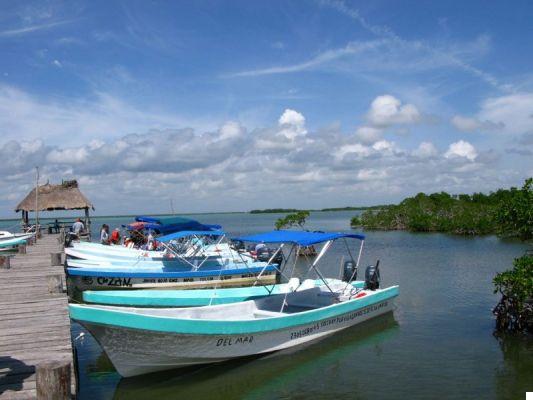
EcoPark Xcaret: an "educational" water park
EcoPark Xcaret is another super water park on the coast between Tulum and Playa del Carmen. Here too you will find an area entirely dedicated to children and a lot of activities. Unlike Xel-ha, it has a slightly more educational imprint and recreates Mayan villages, churches and Mexican houses inside. They also organize numerous events inspired by the country's cultural history and can be an interactive and fun way to get to know this fascinating culture a little better. Obviously, even here snorkeling reigns supreme and the most special thing is the opportunity to swim in the typical underground rivers. A section of the park is also dedicated to local fauna and you can even see jaguars and flamingos.
IK LAB: a magnificent art gallery
If after days of snorkeling, white beaches and Mayan ruins you want something different (spoils!) I recommend you go to I LAB. It is located near the archaeological zone of Tulum and is one art Gallery original and really beautiful. The exhibitions and artists vary so take a look at the site, but the structure was born as a meeting between nature and local history and alone is worth the visit. There is no entrance fee and the jungle is in complete harmony with the building which almost seems to be part of the landscape. Unique shapes and clean lines give life to a truly unique space.
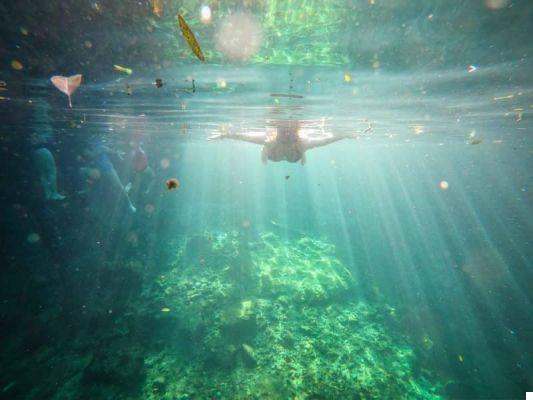
Cenote near Tulum
I cenotes they are one of the main attractions of the Yucatán peninsula and in Tulum there are some spectacular ones (also calculate that the cenotes, in the world, can be seen almost exclusively here!) .. But let's take a step back. What are the cenotes? They are formations that are created in the karst soil due to erosion and produce suggestive caves and pools of water where it is possible to swim and dive. The translation from the ancient Mayan language is cave with water, and during the Mayan empire it is assumed that they played a leading role in the celebration of religious and propitiatory rites. Depending on the state of erosion, the cenotes take on different characteristics. Those of more recent formation are real caves completely underground or with a hole in the rocky vault quite small. Over time, erosion leads to a progressive widening of the hole in the ground and the cenote ends up being a completely open-air puddle. The area around Tulum is particularly rich in cenotes. Seeing at least two, three, also depending on how long you have, is mandatory. I list my favorites.
- Cenote Manati Outdoor dining with emerald water, surrounded by dense and lush vegetation.
- Cenote Casa Tortuga Three cenotes in one! With the guides you can access the underground ones (with stalactites, fish and very cold waters) and in the last one, the outdoor one, you can swim and dive freely.
- Cenote Dos Ojos Two unmissable underground cenotes with breathtaking colors. Super nice guides and well organized excursions.
- Gran Cenote Semi open cenote a few steps from the coast. Clear water and unique scenery. It even happens to see sea turtles exploring.
- Crystal Cenote Uncrowded open air cenote, very close to Tulum. There is also a swing to dive from.
- Cenote Zacil Ha Outdoor dining with crystal clear water and loungers for relaxing. Great for a relaxing afternoon
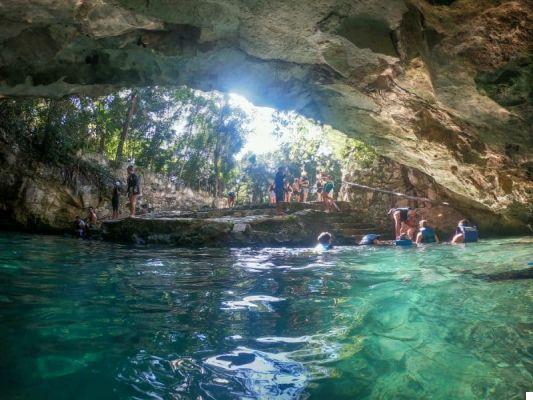
Where to sleep in Tulum
In Tulum, depending on the season, hotel prices vary a lot, but in principle these are a couple of possible alternatives that are not very expensive and with super services and rooms!
- Route of the Sun Very central location and Mexican style rooms. They also rent bikes and are very helpful.
- House Pueblo Tulum Minimalist hotel with clean lines. Even the design alone is a balm for the eyes and guarantees an experience of total relaxation.
- Azulik Hotel and wellness resort by the sea with a private beach. Children are not allowed and it is the ideal location for a romantic getaway.
- Nomad Tulum Private beach and stunning Mexican-style rooms with a touch of radical chic. Immerse yourself in nature and gorge yourself in their exclusive restaurant… the only problem is that you will never want to leave this paradise.

Where to eat in Tulum
In Tulum you eat a lot and very well. These are just a couple of places that convinced me and that I recommend you try.
- Sabor de Mar is a slightly spartan local of Mexican cuisine, specializing in fish, especially raw. Excellent quality, fair prices and very fresh food (it is no coincidence that there is always a queue!).
- Taqueria Honorio with Mexican cuisine and tacos at will at bargain prices. A little fast food atmosphere, but exquisite cuisine.
- NU Tulum is a high-end Mexican fusion cuisine. Very suggestive atmosphere and location, open-air restaurant in the middle of the jungle with excellent food. A little higher prices, but ideal for a dinner where you want to spoil yourself a little!




